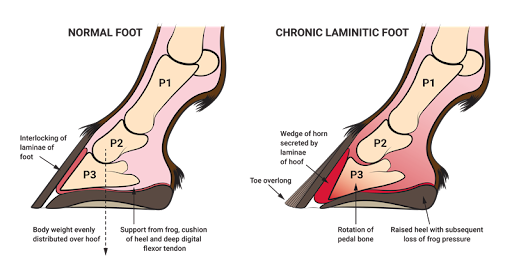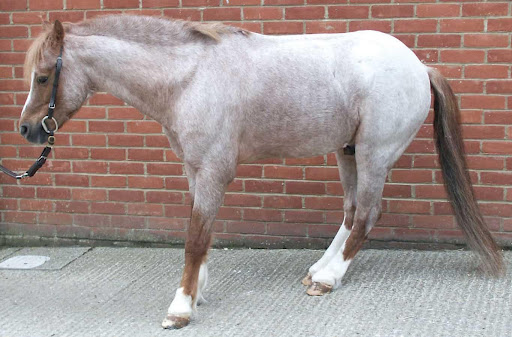The word all horse owners dread….LAMINITIS! It is possible for any horse to develop this condition but it has shown to be more common in ponies and smaller ‘stockier’ types. Our native breeds such as Connemara pony are particularly exposed. By learning and understanding the condition, in some cases we can minimise the risks in developing this chronic condition and in the long term, improve overall equine welfare.
Laminitis refers to the inflammation and disruption of blood flow to the sensitive Laminae in the hoof. The Laminae plays an important role in stabilising the bones in the foot. The pedal bone (or coffin bone) is the equivalent to the top of a human middle finger. Similar to a human fingernail, the hoof wall is attached to the pedal bone by a strong dermal-epidermal bond. When inflammation occurs, the integrity of this important bond is compromised, leading to serious damage to bones and soft tissues.

Laminitis can occur in three different scenarios.

Laminitis does not actually cause death however if the condition progresses to the point where there is irreversible damage to the foot and surrounding structures, the quality of life must be considered and it may be in the best interest of the horse to be euthanized.


Share
Your subscription is 100% Free for our first year, No credit card details required.

Championing Resilience and Community in Showjumping Avril Mackey’s influence in the equestrian community goes beyond just competition; she embodies the

Introduction: A Crisis of Confidence In what can only be described as a dramatic repudiation of Horse Sport Ireland’s (HSI)

As we approach the thrilling Distinguished Gentleman’s Ride in Kildare on May 19th, there’s a palpable buzz around what promises